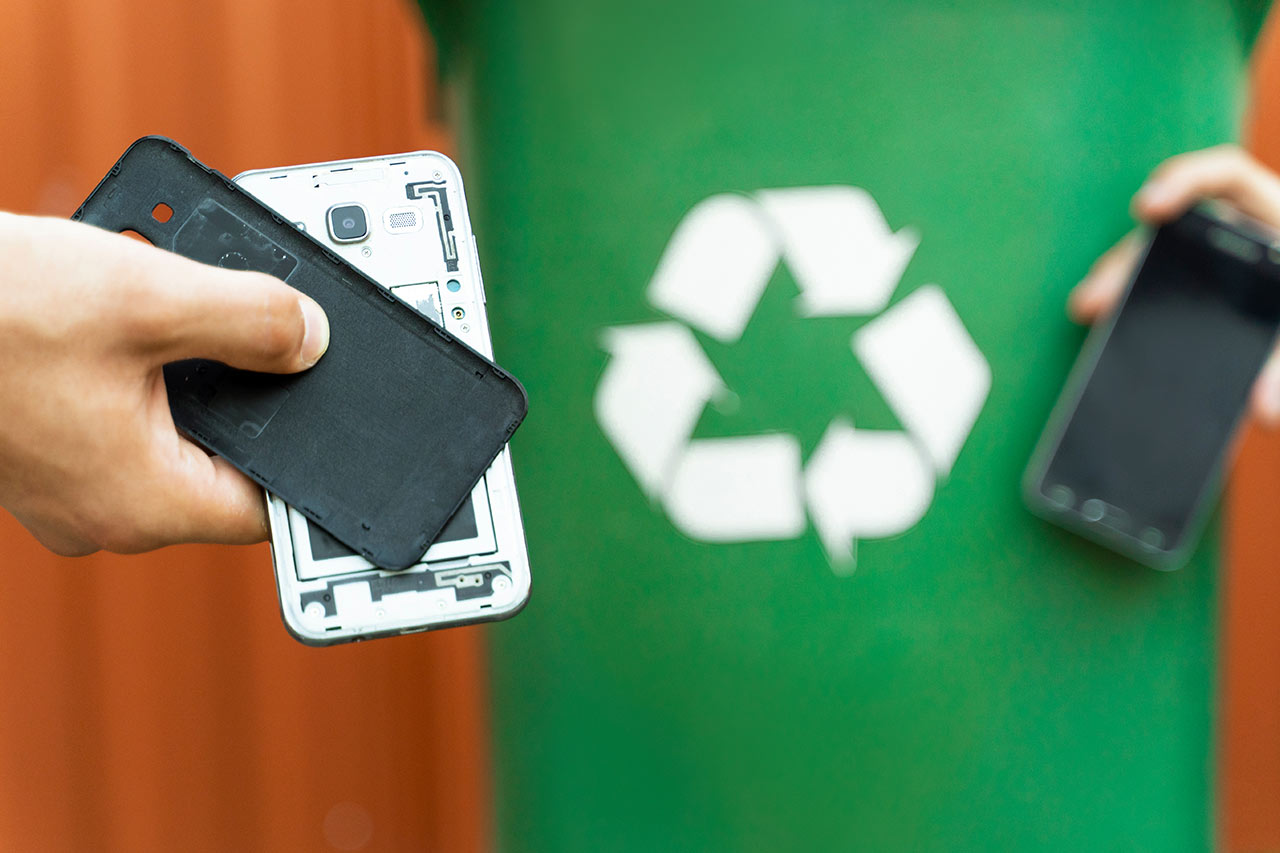Smartphone recycling: A sector of excellence in the making

Alcimed, an innovation and new business consulting firm, reviews the smartphone recycling market.
French consumers change their mobile phones every other year. These devices have significant impacts on the environment. Rather than keeping our old smartphones in our drawers, solutions exist to give old smartphones a second life to avoid keeping them in a drawer. Alcimed reviews how the smartphone valorization chain is gradually being implemented.
The smartphone market is reaching a saturation point.
Smartphones were a true revolution: in only 10 years, they have taken a major place in our lives and have become essential devices in our way of living:
- 85% of phones sold across the world are smartphones.
- More than 7 billion smartphones have been sold worldwide since the first iPhone was released in 2007.[1]
After years of growth, sales fell for the first time in 2017, with a 5% decline over a year on the Chinese market, which accounts for almost a third of global volumes. Reasons for this consist in the smartphones replacement rate which is slowing down and the still very high prices. Nevertheless, the gradual decline in tablet sales, as well as 5G and new technological innovations (virtual reality, augmented reality, artificial intelligence, etc.) entering the market, should create a new dynamic allowing an increase in sales. This increase is projected to start in 2019, to reach 1.68 billion of smartphones sold in 2020.[2]
However, this increase in sales is likely to go hand-in-hand with the ever-increasing environmental impact of smartphones.
Not so “smart” for the environment
Smartphones have a very high ecological footprint. According to France Nature Environment, “Smartphones are a real mine of raw materials, with nearly 70 different materials present in one smartphone (see Figure 2), but 70 kg of raw materials must be mobilized to produce, use, and recycle a single one“. Do solutions to reduce the environmental impacts of smartphones exist?
Smartphones value chain is slowing getting organized.
Smartphones could have a second life. Currently, the solution lies in two words: increasing value. Two techniques are available: reconditioning and recycling.
- Reconditioning of smartphones means refurbishment: a smartphone is put back on the market after the defective part has been replaced, and its resale price depends on its state of wear and tear. According to GFK, 10% of the 20 million of smartphones sold in France in 2016 have been refurbished.[3]
- Recycling applies to phones that are too damaged to be refurbished. They are then sold to companies specialized in recycling the most valuable electronic components and materials. It is estimated that only 5% of smartphones sold in 2016 have been recycled. Whereas 85% of a smartphone is recyclable. For every 10,000 units recycled, about 80 kg of copper, 130 g of gold, and 700 g of silver can be recovered.
Regulations are in place: rare and precious metals must be processed as defined in international conventions and national regulations. The European Directive 2012/19/EU of July 4, 2012 aims to make the recovery of such waste mandatory. However, in reality most of the old devices go to waste and nearly 30 million smartphones are sleeping in drawers.[4]
Gradually, the reconditioning and recycling markets are developing. According to IDC, the global market for refurbished smartphones is expected to grow from 81 million to 223 million devices between 2015 and 2020, corresponding to an average annual growth rate of 22%. In addition, smartphones waste recovery is a source of employment – in particular of technicians because “Unlike manufacturing the original product, reconditioning products will create jobs directly in the country.”[5]
Thus, increasing the value of used smartphones provides a unique opportunity to create a sector of excellence, provided smartphones collection is increased. “This recycling sector will keep on reinventing itself in the future. It will follow developments of smartphones, which will probably be more flexible, lighter, equipped with voice assistants, virtual reality features, and screens projected onto the retina… And why not even imagine the decline of the smartphone in a few years in favor of another form of intelligence? “- concludes Jakub Rams, Manager in the Energy, Environment and Mobility Business Unit at Alcimed.
[1] http://www.servicesmobiles.fr/20-chiffres-sur-le-marche-mobile-a-connaitre-en-2018-38749/
[2] http://www.vipress.net/marche-des-smartphones-pas-de-croissance-avant-2019-et-les-premiers-modeles-5g/
[3] https://www.lesnumeriques.com/telephone-portable/1-9-million-smartphones-reconditionnes-vendus-en-france-en-2016-n66459.html
[4] https://www.ademe.fr/sites/default/files/assets/documents/guide-pratique-impacts-smartphone.pdf
[5] http://www.senat.fr/rap/r15-850/r15-850_mono.html
Do you have an exploration project?
Our explorers are ready to discuss it with you